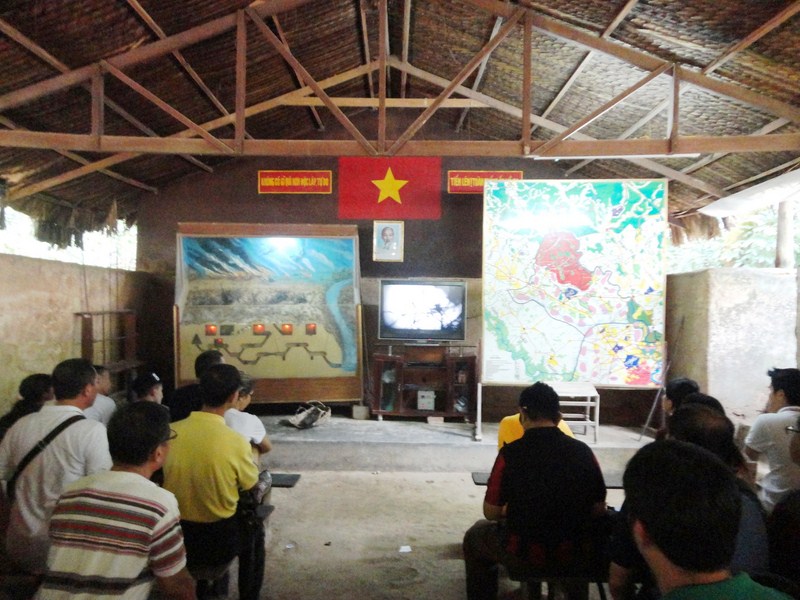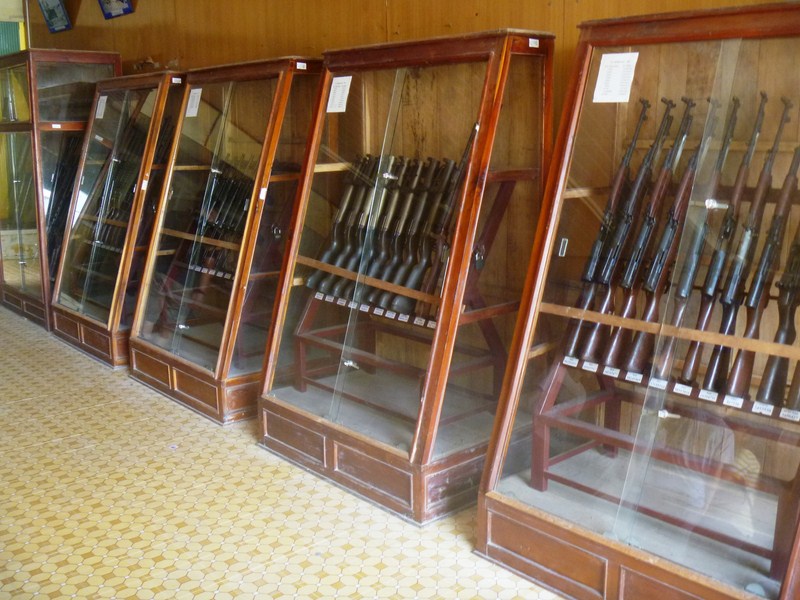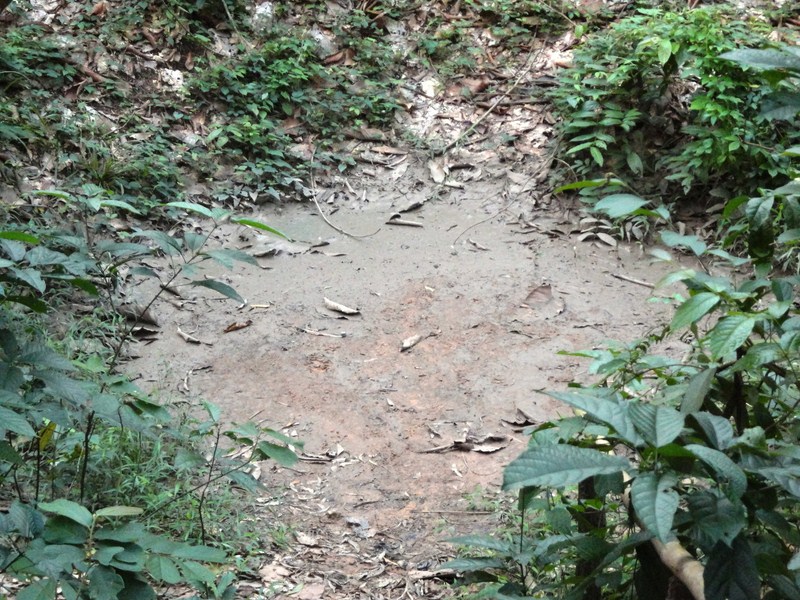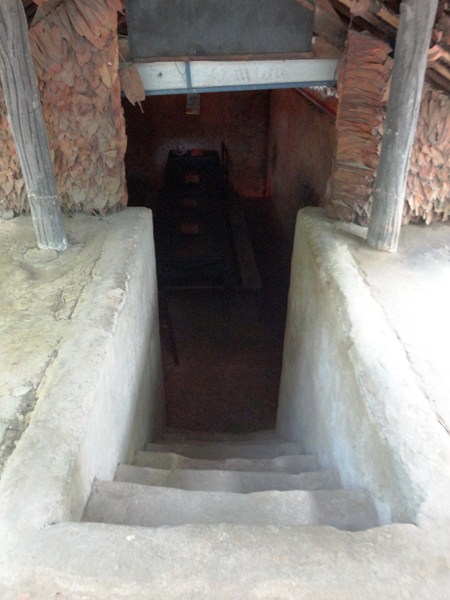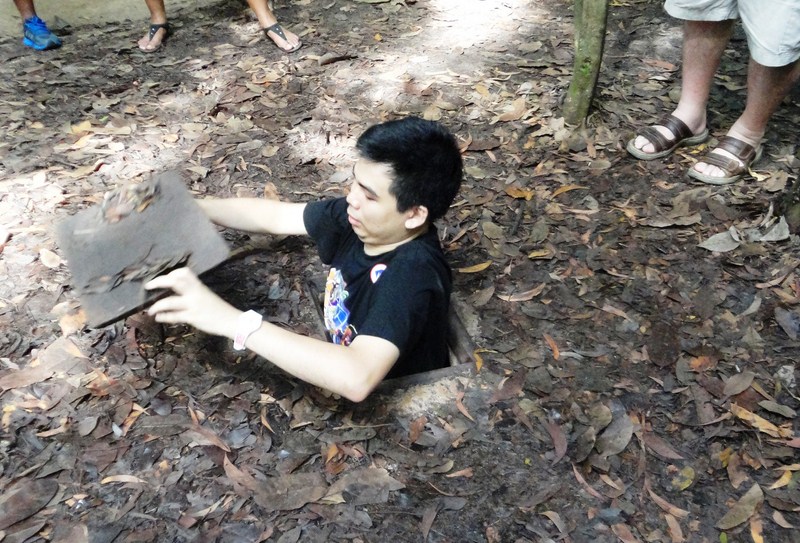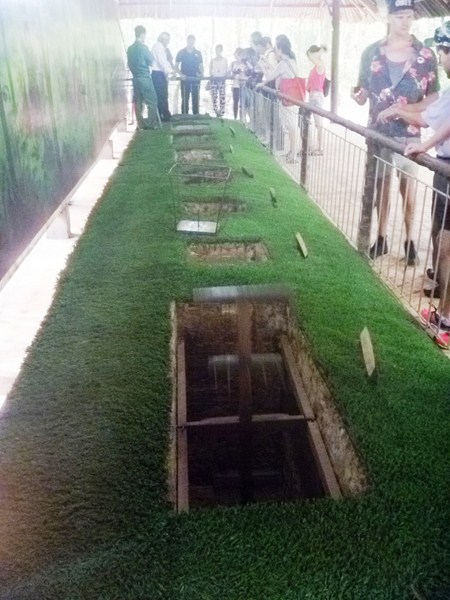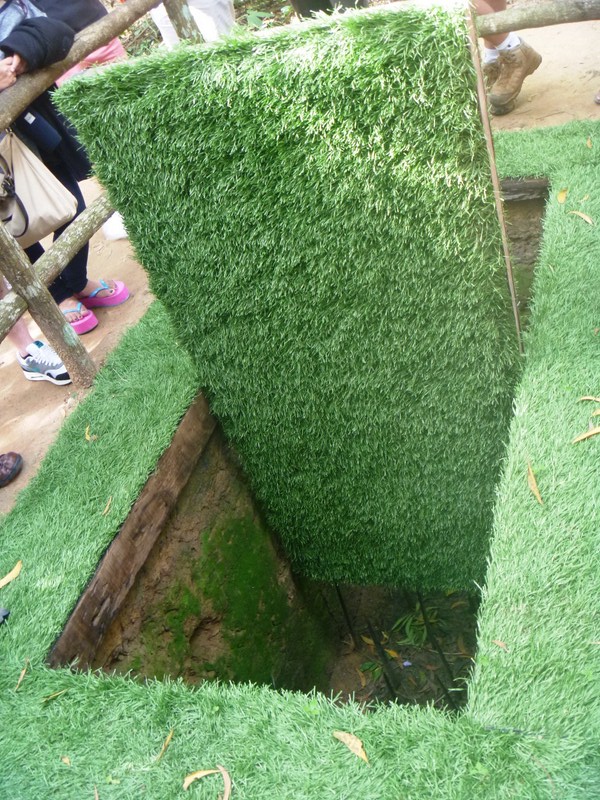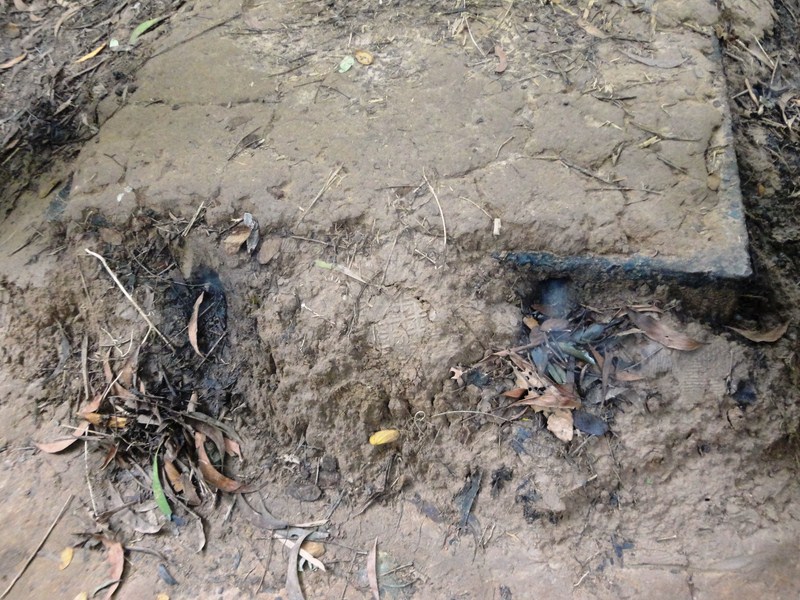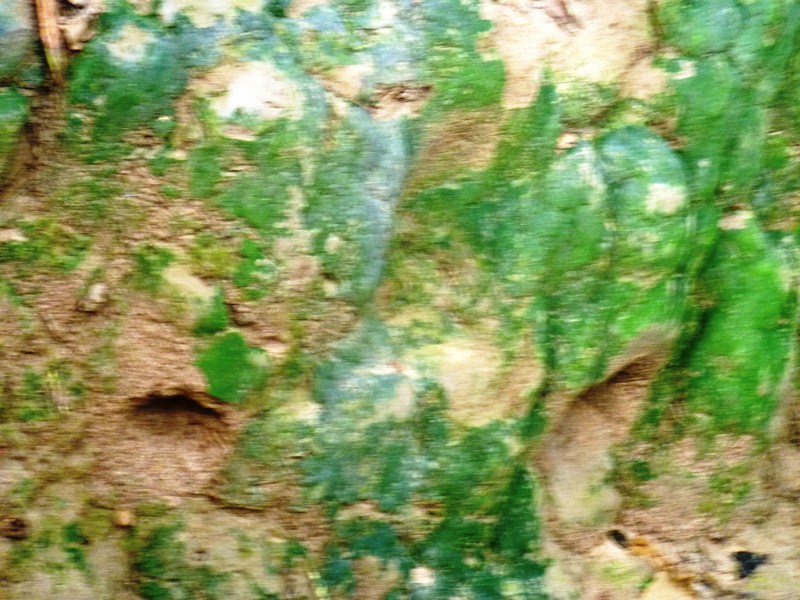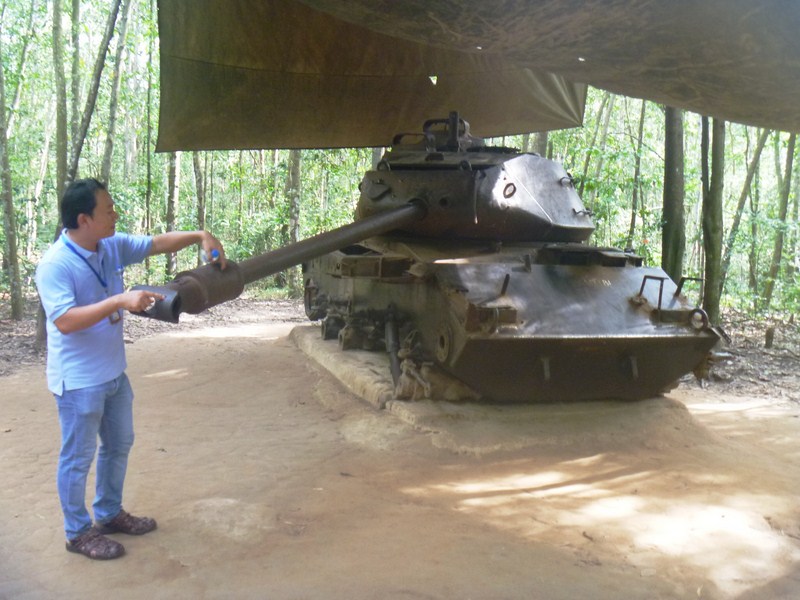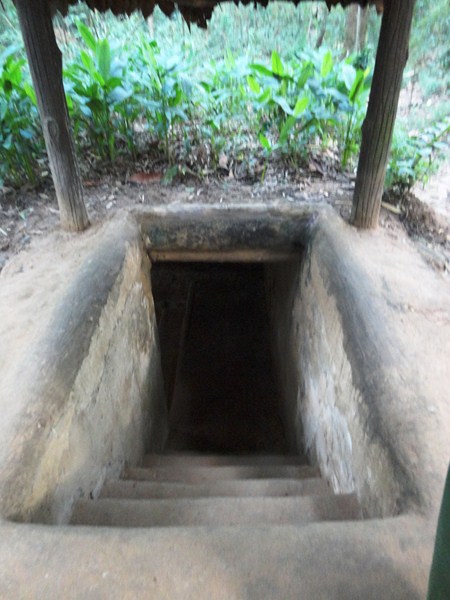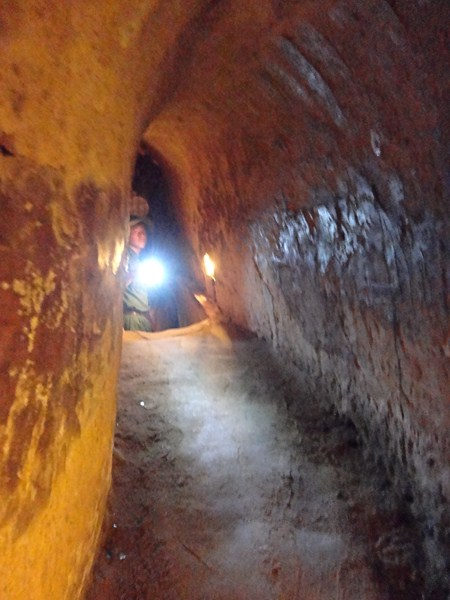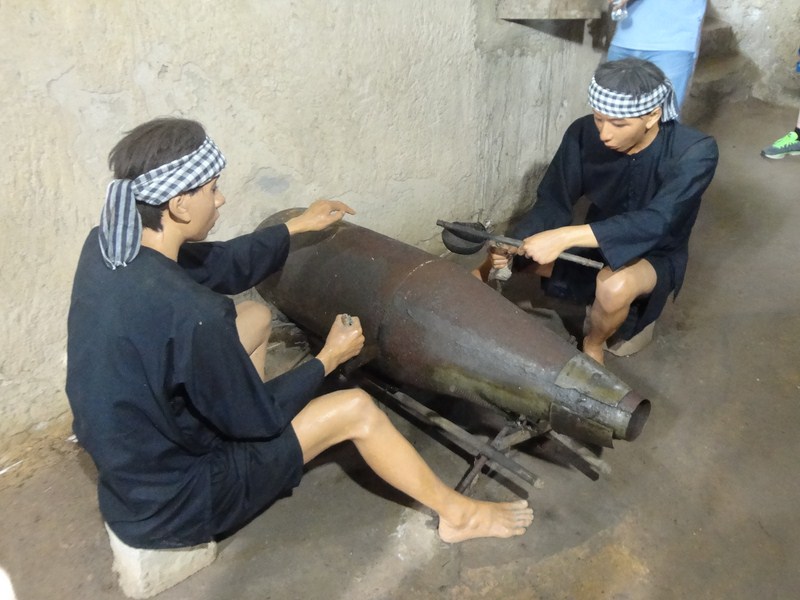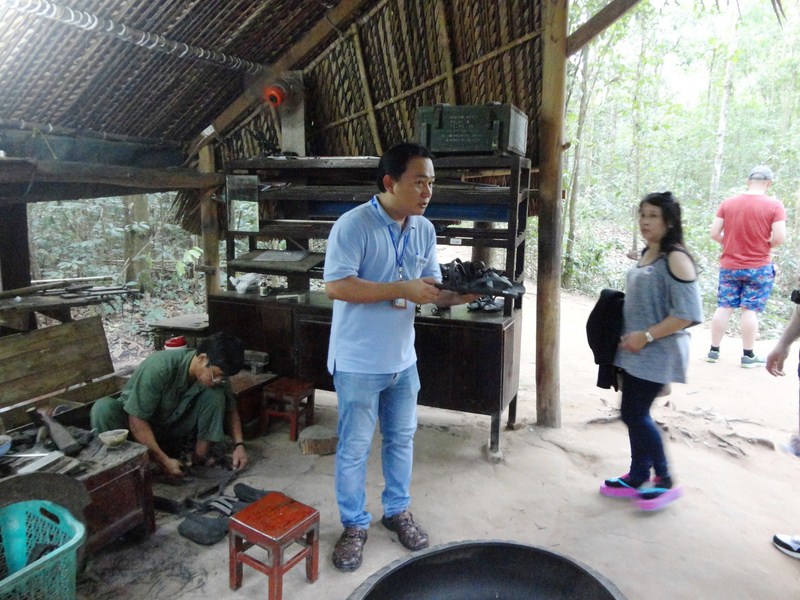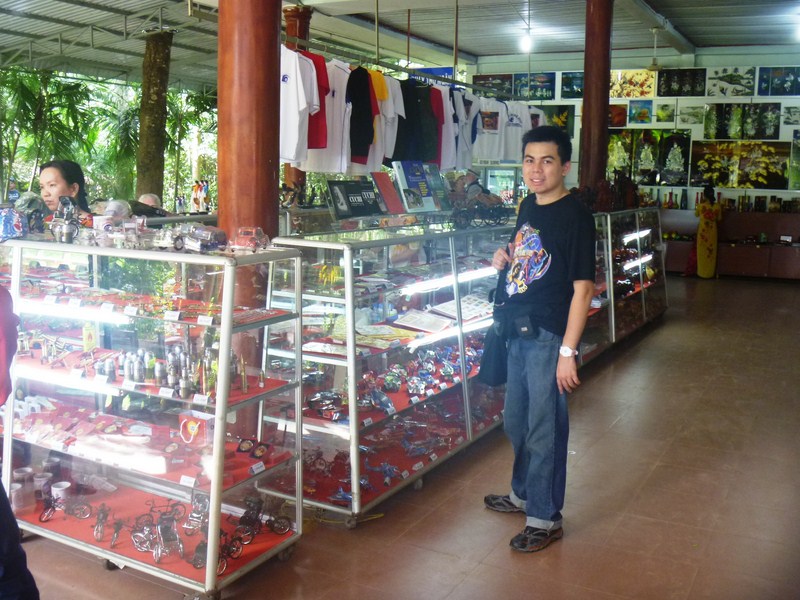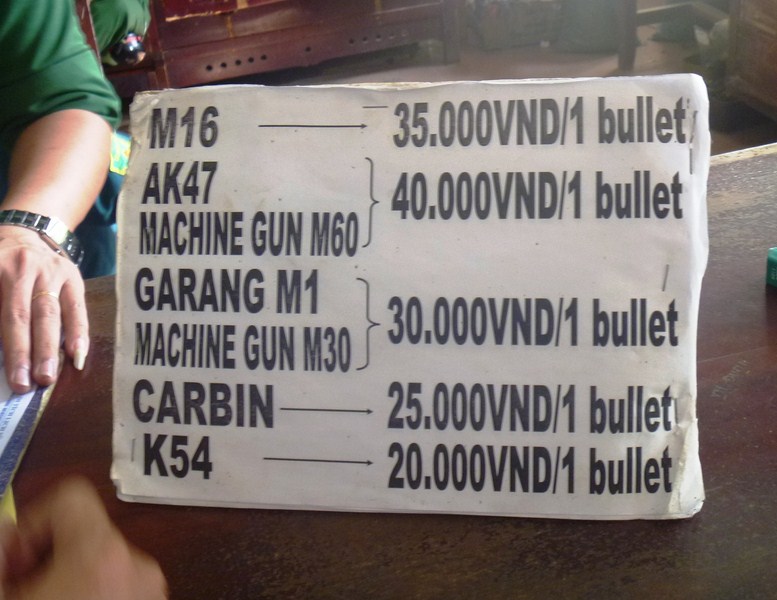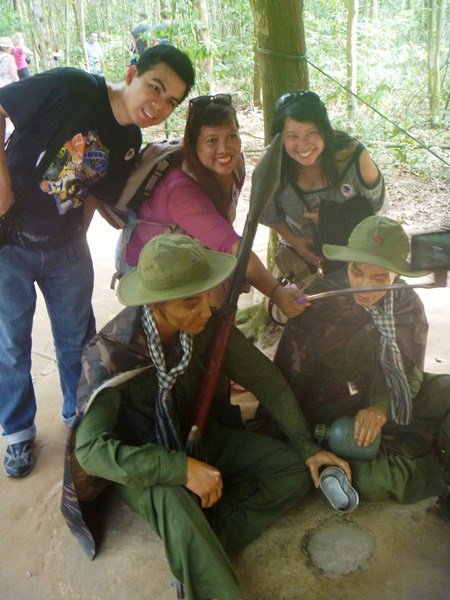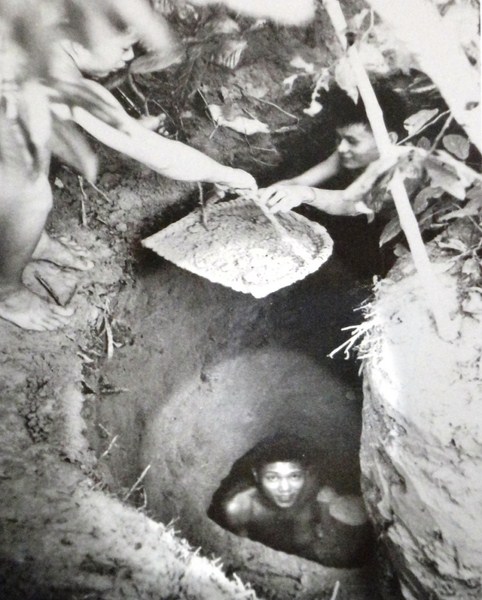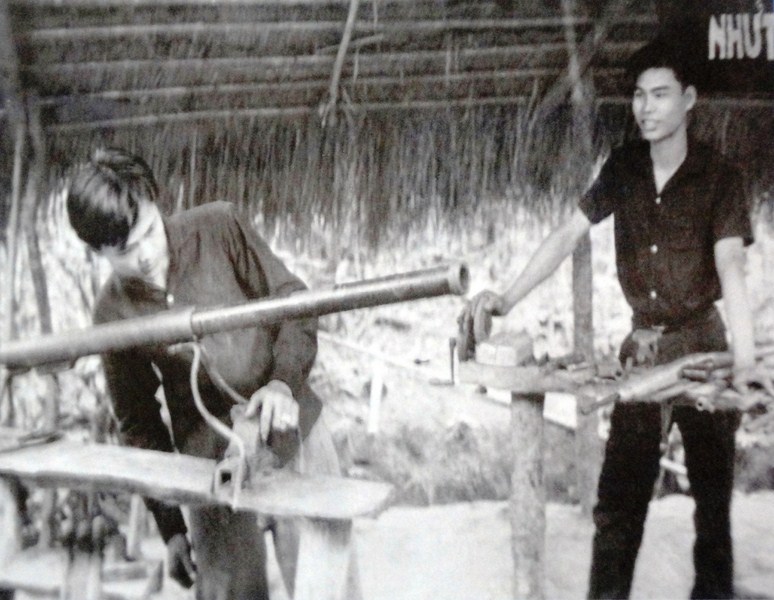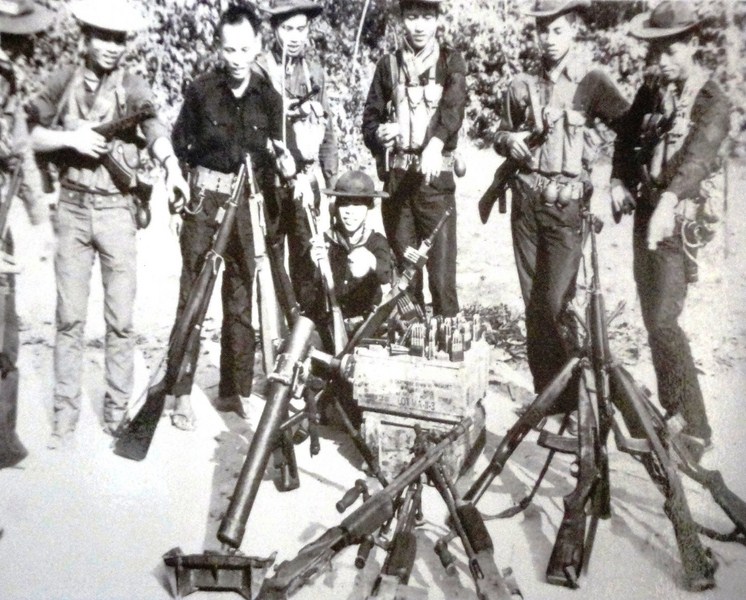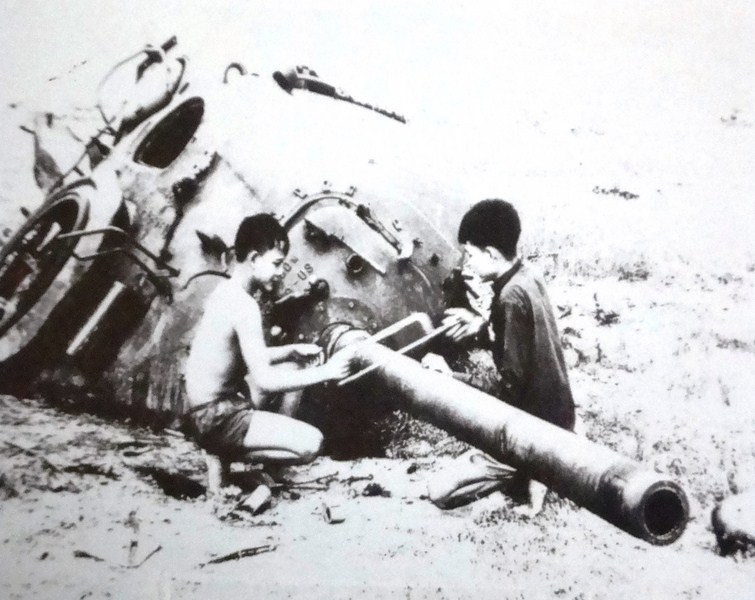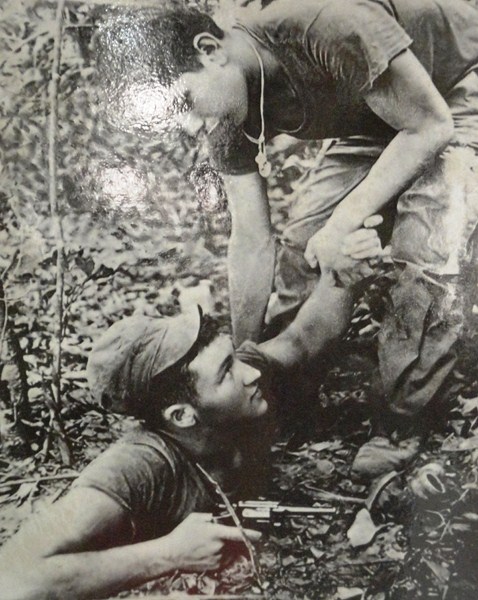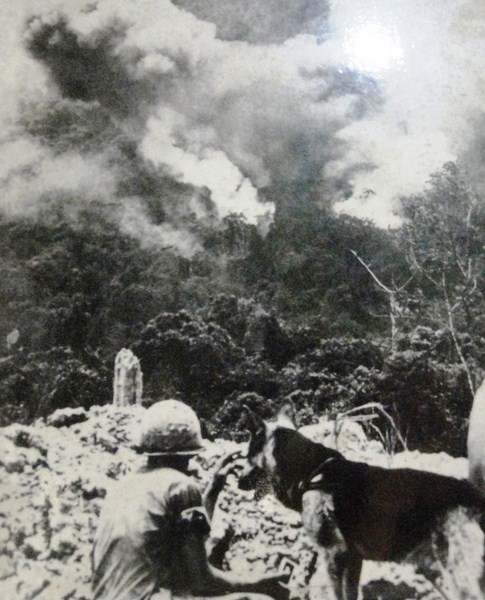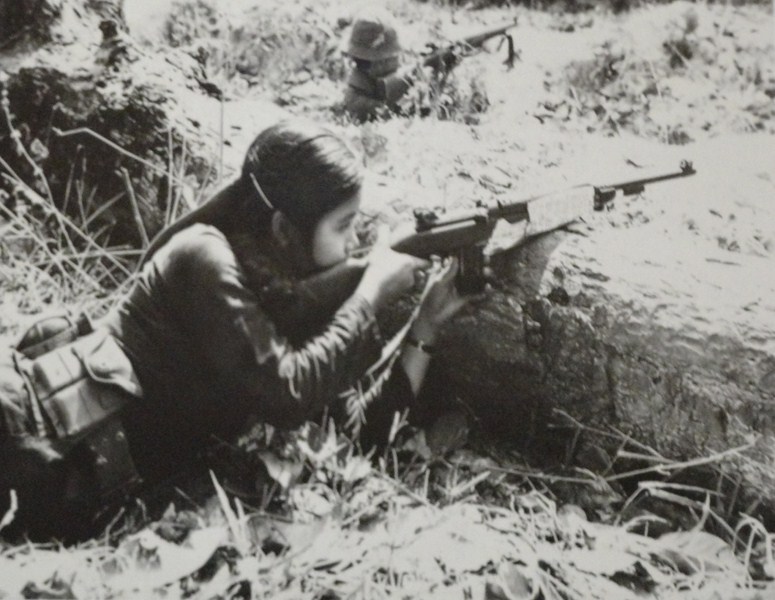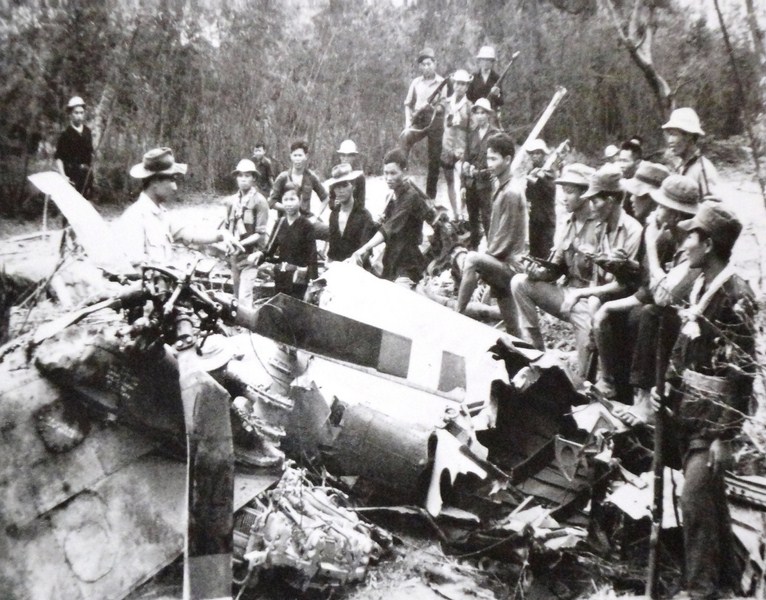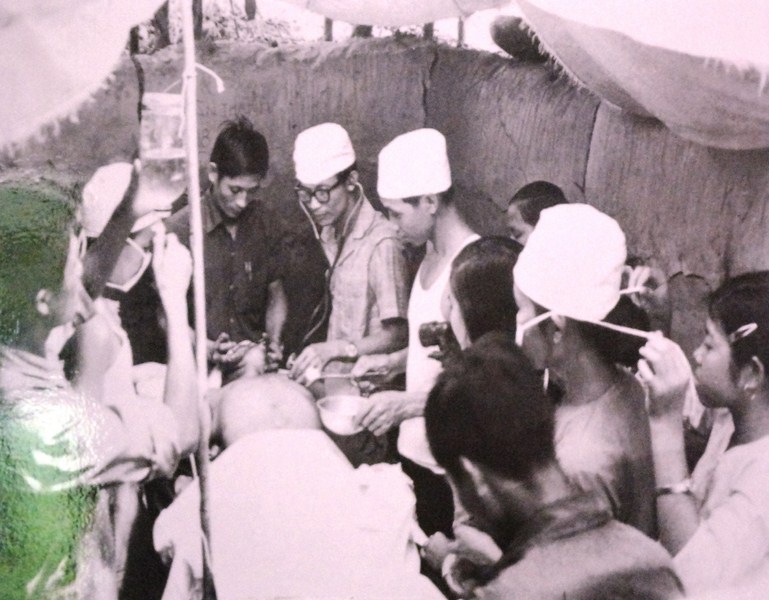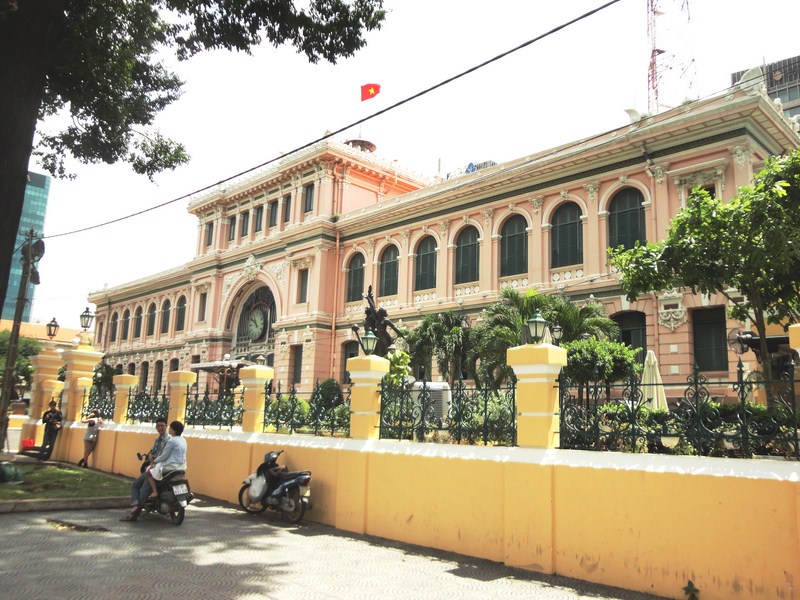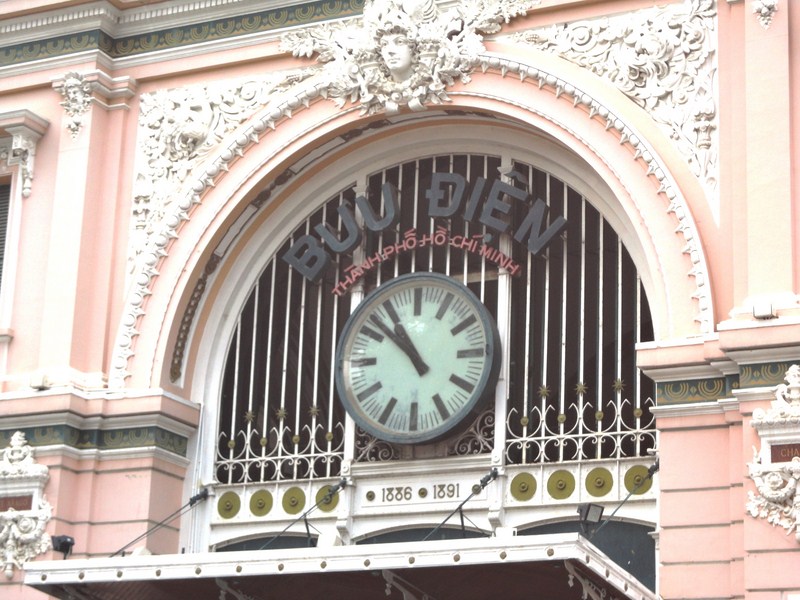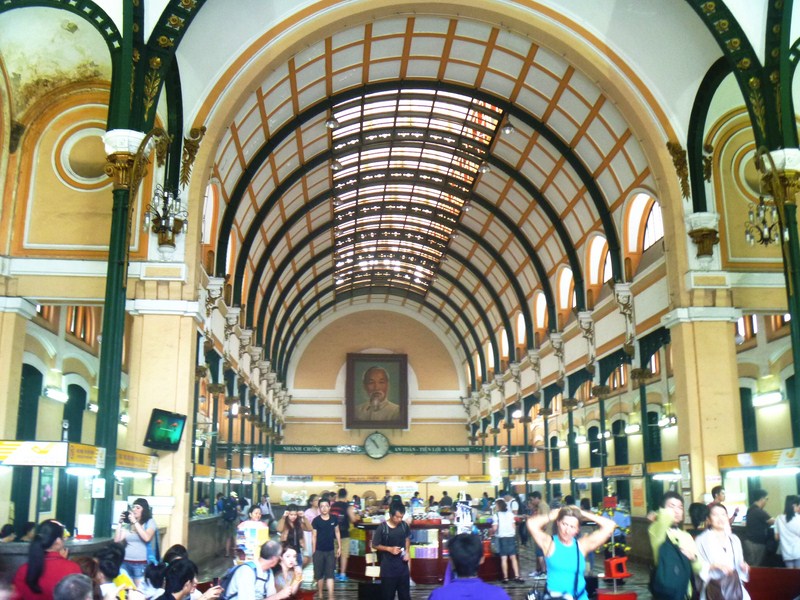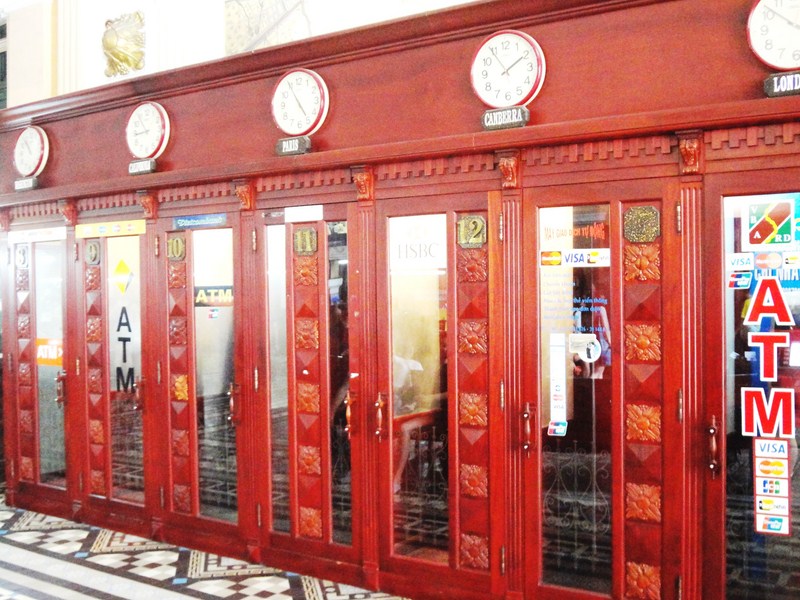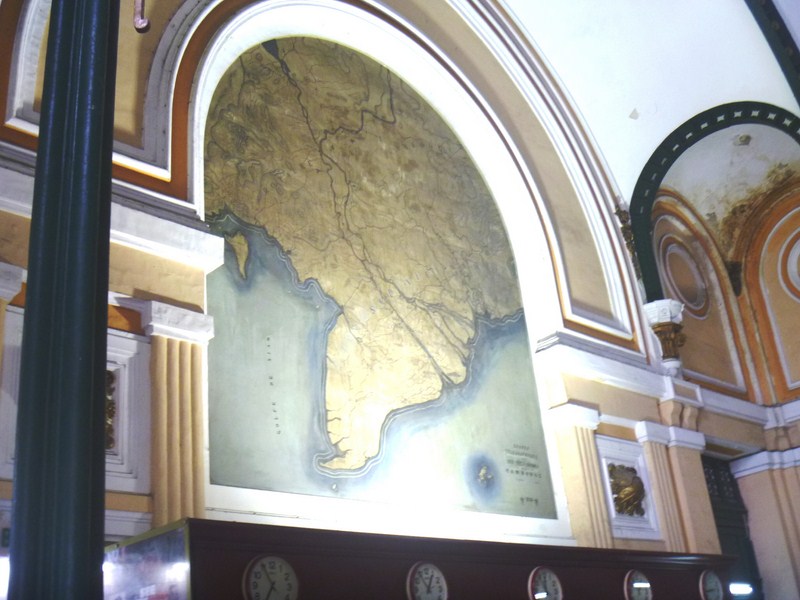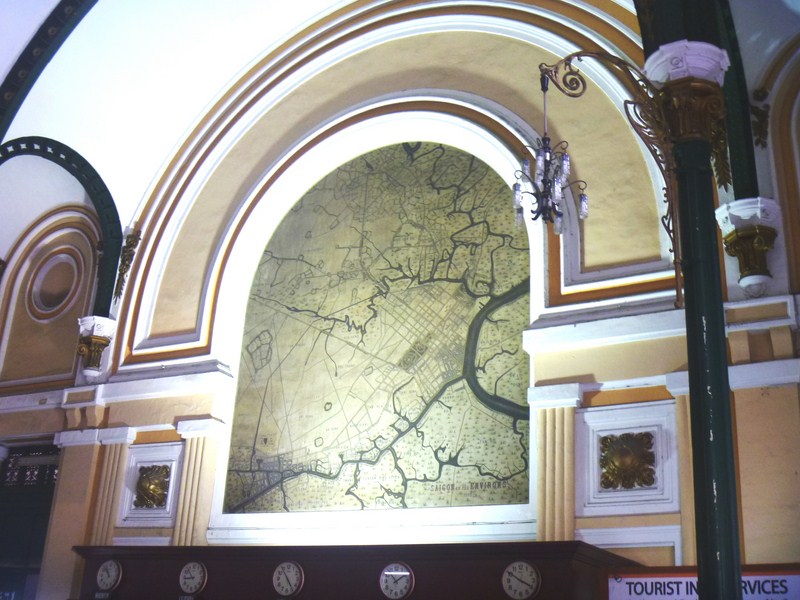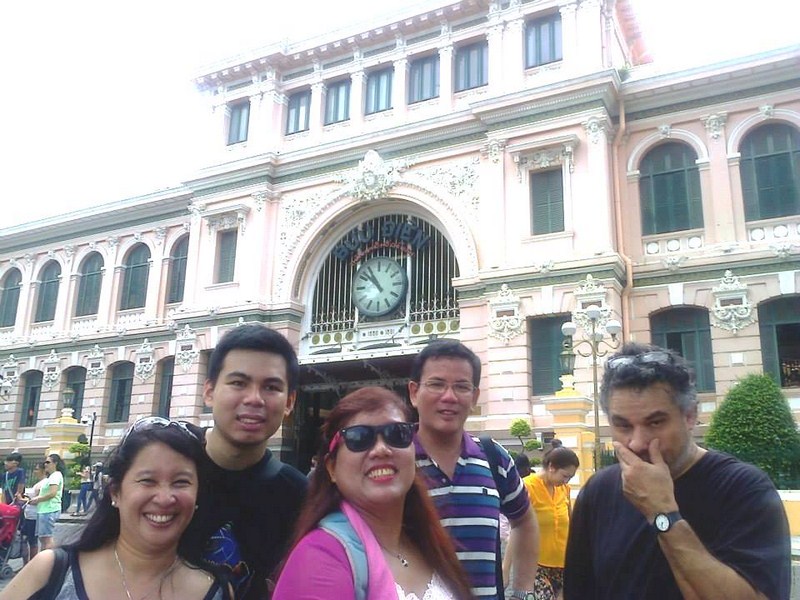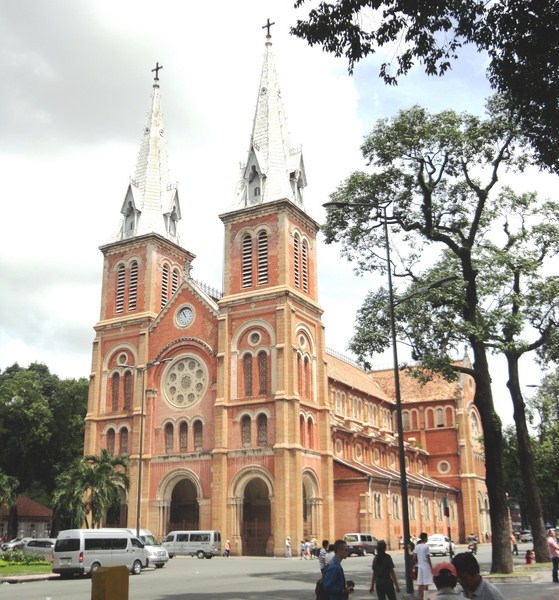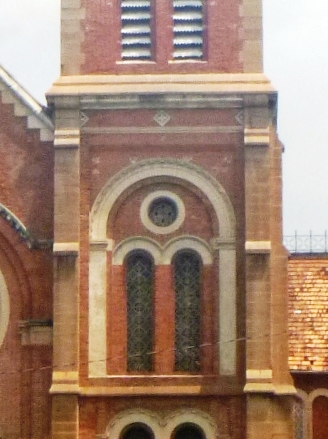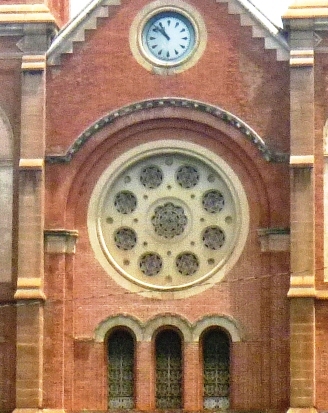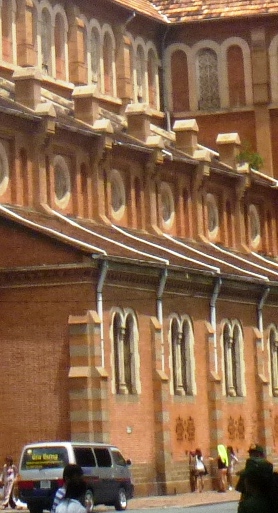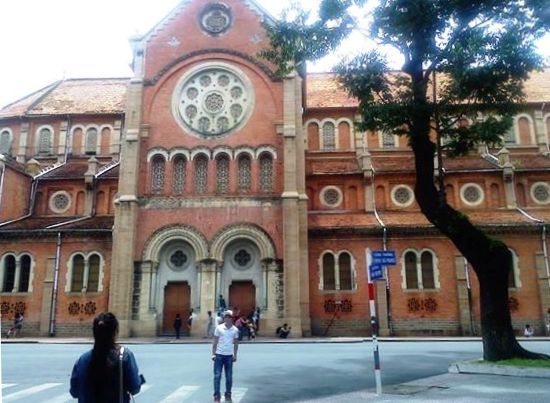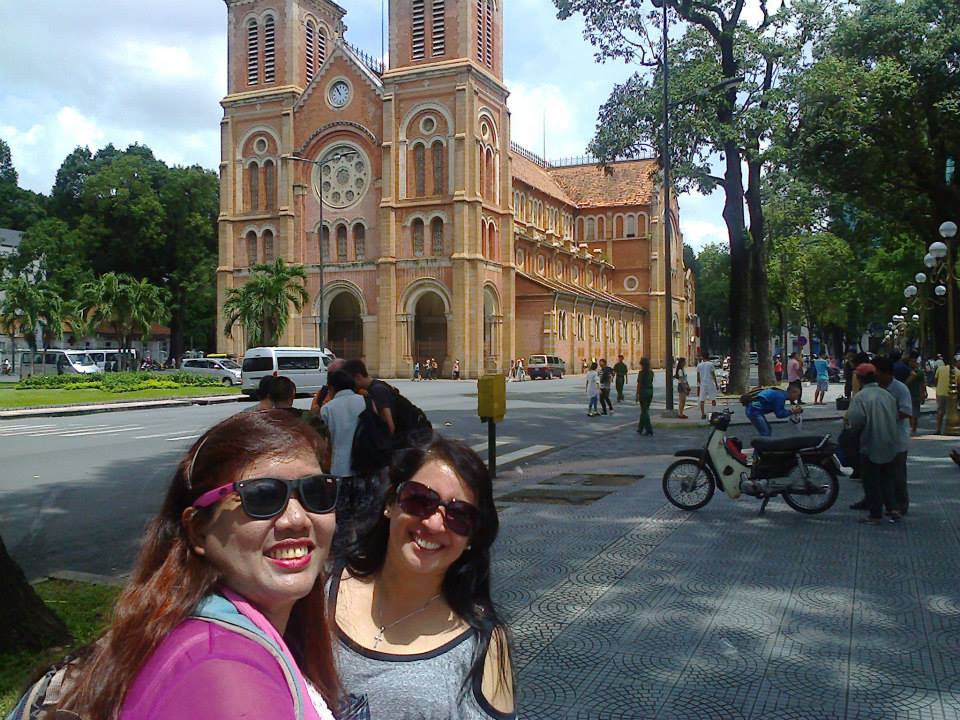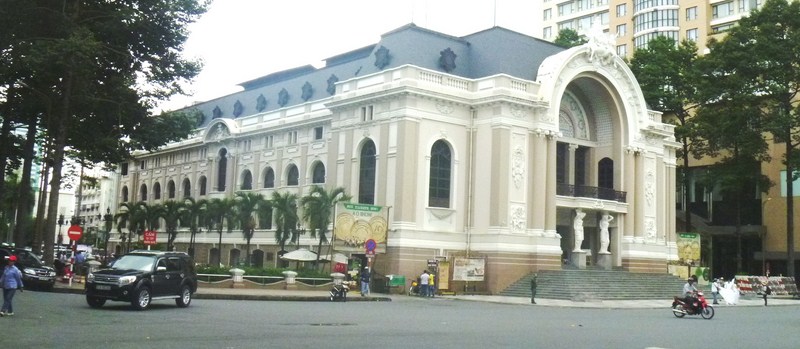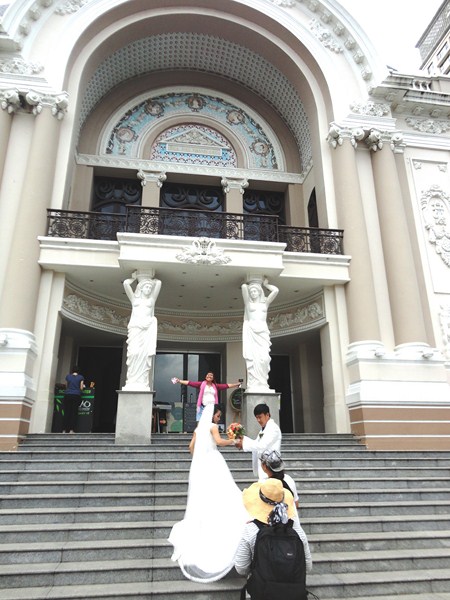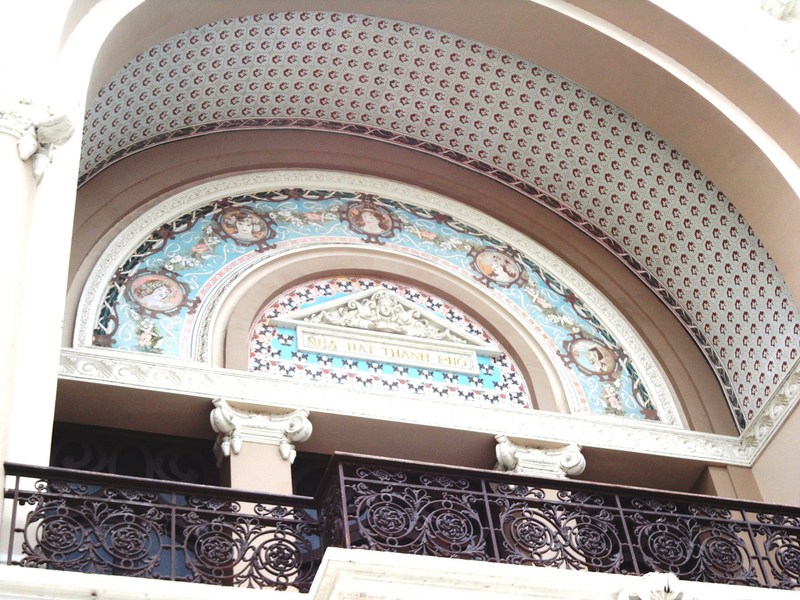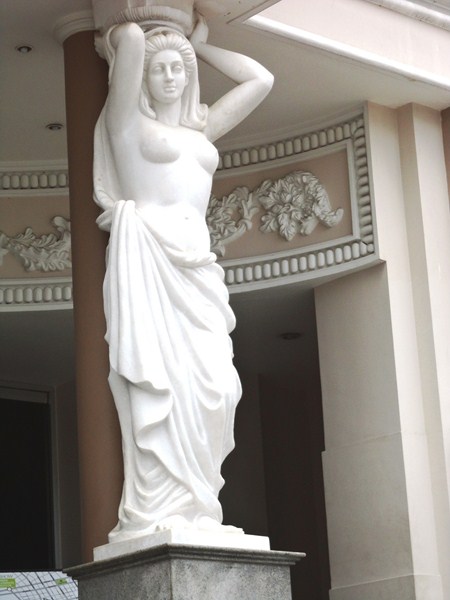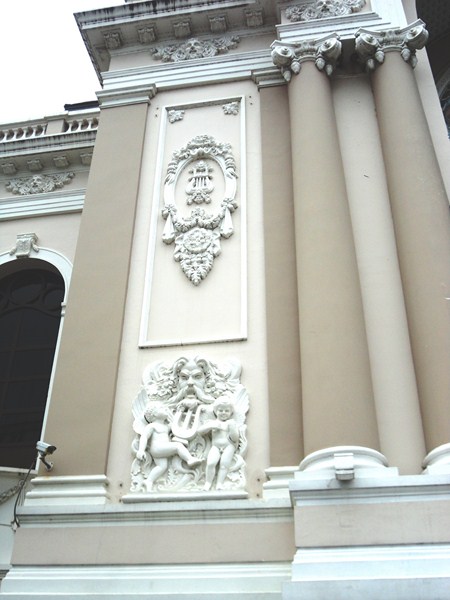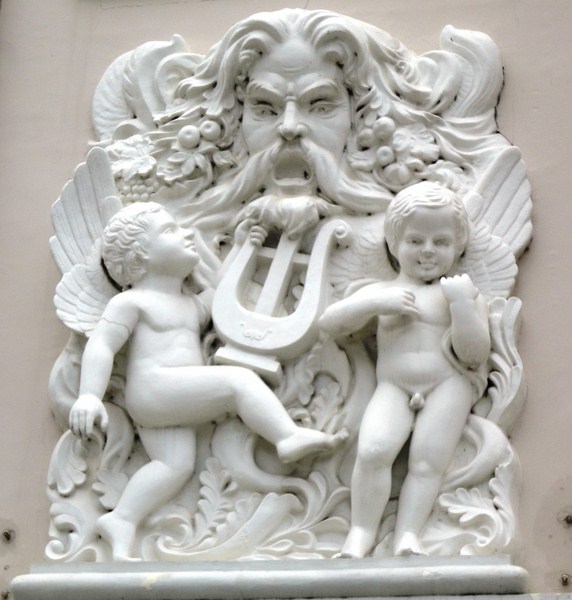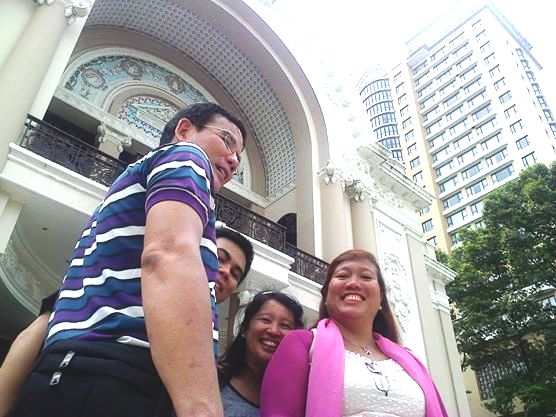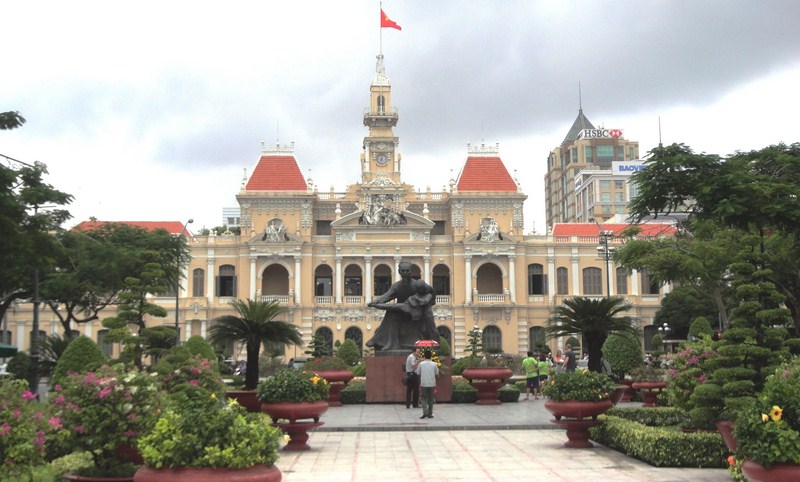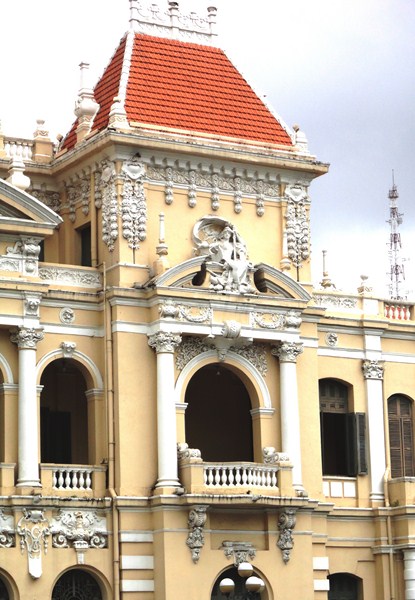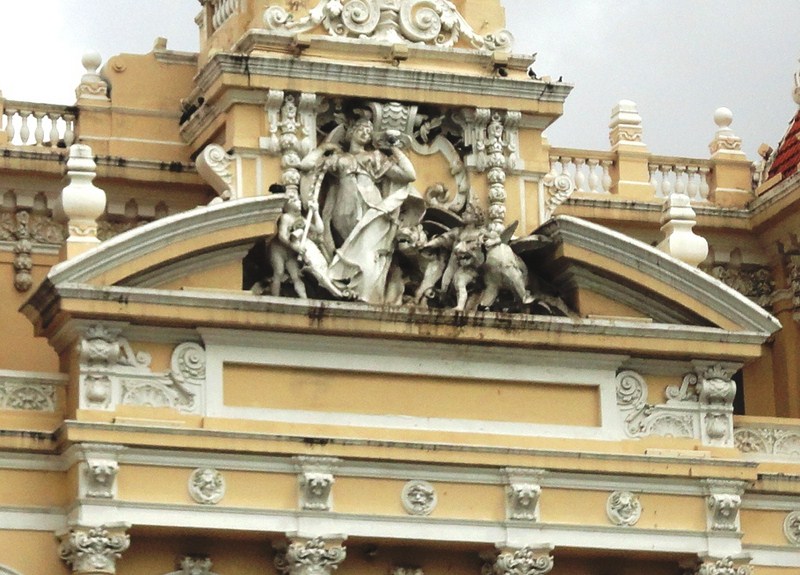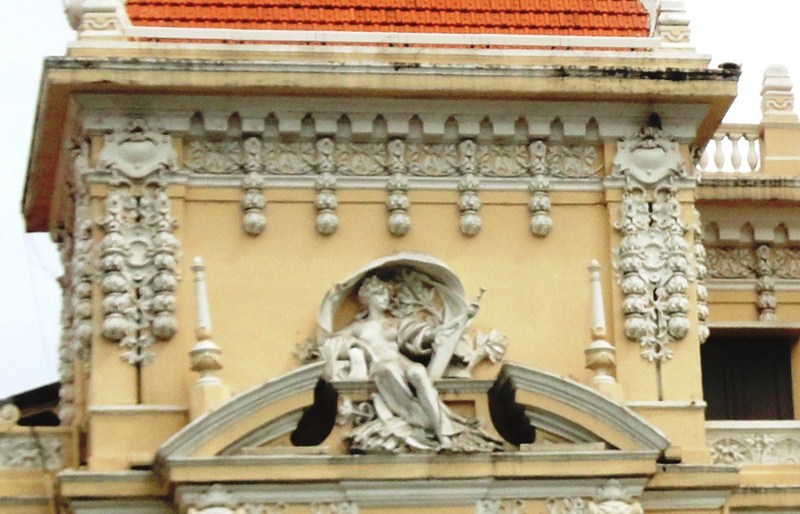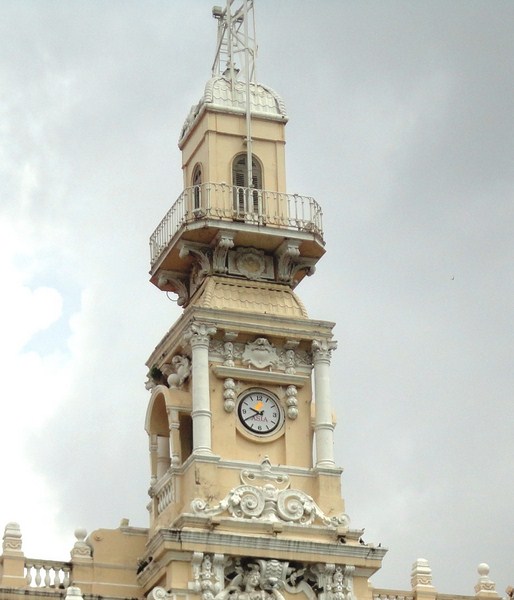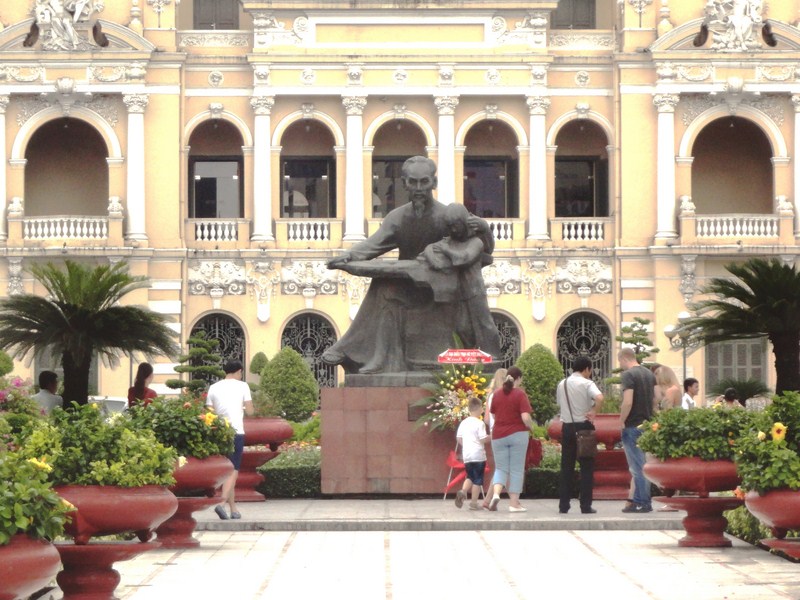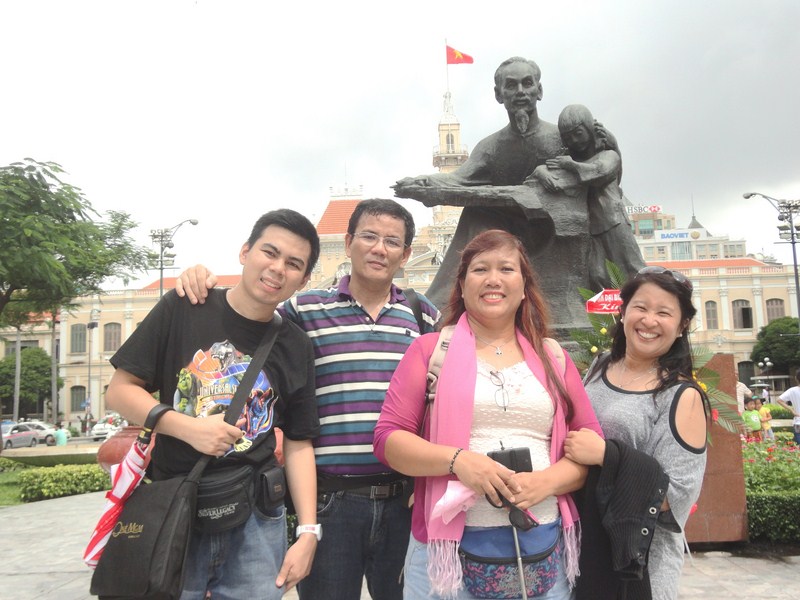No visit to Ho Chi Minh City is complete without a visit to the infamous Cu Chi Tunnels and, during our walking tour of the French Quarter, Osang, Violet, Jandy and I visited the Saigon Tourist Office to book a half-day afternoon guided tour. After lunch at the Propaganda Cafe, we promptly returned to the tourist office by 1 PM where we were to be picked up by our tour bus.
This 75-mile (121 km.) long complex of tunnels has been preserved by the Vietnamese government and turned into a war memorial park with two different tunnel display sites open to visitors – Ben Dinh, closer to Saigon, and Ben Duoc (15 kms. further) which contains part of the original tunnel system. We were to visit the former, the site where most group tours go. As such, it can be extremely crowded.
Our 40-km. trip to Ben Dinh took us 1.5 hours. There are a number of stalls selling food and drinks near the entrance. Our Cu Chi tunnel tour started at a classroom-style hut with a wall chart and a cross-section of the tunnels. Here, we were shown an introductory black and white, Russian-made video detailing the tunnel’s long 25-year construction as well as live footage of American planes dousing the land with Agent Orange and destroying it with bombs.
Then, Mr. Do Thanh Ngan, our local English-speaking guide took us on a fascinating tour of the Cu Chi tunnels along a well defined walking track, with lots of interesting things to see spaced at regular intervals, that loops around the area. Along the way, we walked past huge, mind-boggling hollow basins of earth, actually bomb craters that are evidence of the heavy B-52 bombing campaigns in the region during the Vietnam War.
During the Vietnam War, the tunnel system was a safe haven for thousands of Vietnamese soldiers and civilians and it was virtually an underground city with dwelling houses, schools, hospitals and factories. Through lots of compelling photos and personal effects left behind, we learned more about the conditions these people lived in, the hardships they faced, and the amazing ingenuity employed to maintain life in the tunnels. We also saw examples of how people lived and what they ate.
At one seemingly empty area, our guide pointed to us a small, hidden tunnel entrance just beneath our feet. A Vietnamese soldier first demonstrated to us how to enter and exit the tunnel, closing the entrance with a 2 x 1.5-ft. manhole cover. A tourist also successfully tried her hand in doing so, followed by Jandy.
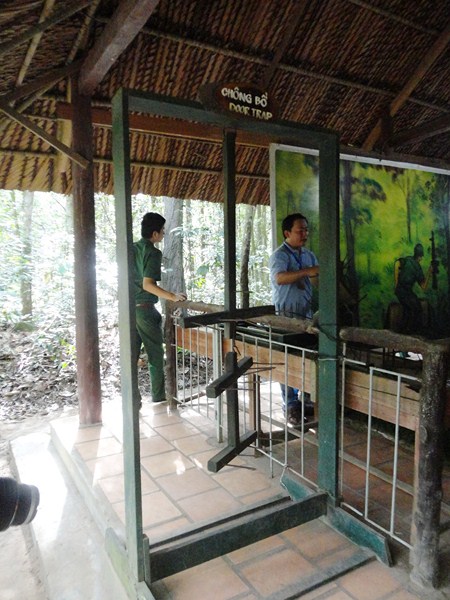
Chong bo (door trap): heavily spiked wooden cross sections suspended above a door or opening via a trip wire. When the wire is tripped, the trap swings down and impales the victim
Also on display were the different types of lethally terrifying but clever booby traps using punji sticks, ironically made from the scrap metal of the American’s artillery, bomb and rocket shells, which were used on American soldiers – chong bat (swinging up trap), chong can coi (see-saw trap), chong canh cua (window trap), chong ghe xep (folding chair trap), chong tru quay (rolling trap), chong-hom (fish trap), chong bo (door trap) and hong tho (sticking trap).
We also wandered past tiny little chimneys in the ground that dispersed smoke from the underground hoang cam kitchens, tiny ventilation shafts and climbed up what remained of a U.S. army M-41 tank destroyed by a delay mine in 1970. Underground conference rooms (ham hoi truong), where campaigns such as the Tet Offensive were planned in 1968, have also been restored. There were also some mannequins re-enacting soldiers in different settings (an army camp, military workshop, etc.).
Jandy and I, as well as other guests, were given the opportunity to do a tough crawl through a 100 m. long section of the “touristed” tunnels, never part of the real network, which have been specially created and enlarged (around 50%) and widened so that the larger Western tourists can now fit through. Though low powered lights have been installed to make traveling through them easier, it is still not recommended for the claustrophobic.
Violet tried but gave up while Osang remained above ground. The crawl space was so small and tight that I found it impossible to believe that anyone ever survived here before the tunnel was enlarged. For those who may not want to, or may not be able to continue, exit points were located at the 20 m., 40m., 60m. and 80 m. marks. Jandy and I exited after 20 m. This was the highlight of our tour
Other above-ground attractions include numerous souvenir shops, at the end of the walking track, some focusing on war memorabilia as well as the traditional Vietnamese souvenirs which could be found elsewhere. Nearby is a shooting range where visitors can play real war games by firing a variety of authentic Vietnam-era assault weapons such as the K-54 pistol, the M-16 rifle, AK-47, M1 carbine, M1 Garand, Russian SKS and the M-30 and M-60 light machine guns.
Sounds like great fun but I cannot help but put off from my mind what these “toys” were really designed for – killing. Besides firing a weapon costs 20,000 VND/bullet (US$0.95) for the K-54 pistol all the way up to 40,000 VND/bullet (US$1.88) for AK-47 and M-60 machine gun, and you have to buy at least 10 bullets (you can, however, share these with someone else).

